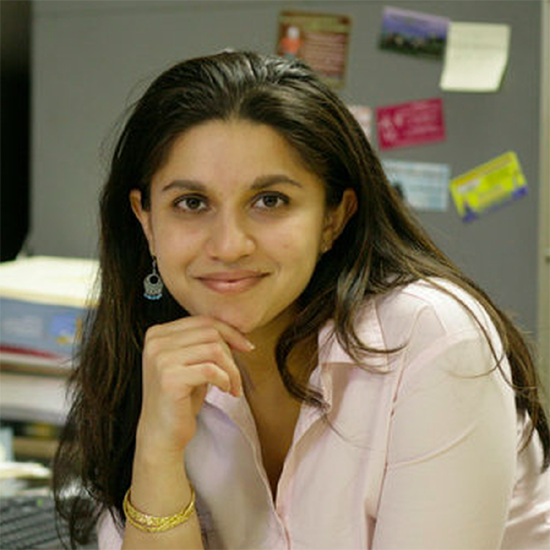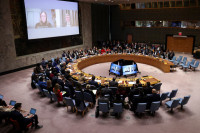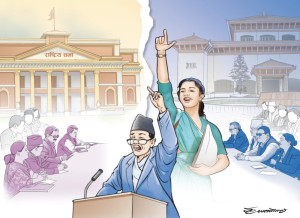Columns
Transforming slums
The issue of Dharavi, which provides a place to live and work for a million people, continues to fester.
Rafia Zakaria
It is the slum that earned Hollywood millions of dollars. Dharavi, the slum pictured in the 2008 blockbuster movie Slumdog Millionaire, is estimated to be just around 2.8 square kilometres; but is said to house up to a million residents.
They include some of Mumbai’s poorest as well as most resourceful people, whose work and school and home can all be found within the boundaries of the congested slum. All the horror stories are true: Rivers of trash and excrement run through the slum and people inhabit the tiniest spaces imaginable.
However, Dharavi is located in the heart of Mumbai and for this reason the state government of Maharashtra has been trying to redevelop the area. There are tons of other incentives of course—including the prospect of kickback revenue that could accrue to government officials who push through the plans. In 2018, the government issued a tender proposing an 80 percent private-20pc public partnership for the purpose of redeveloping Dharavi. This tender was won by a Dubai-based consortium named SecLink that outbid India’s own Adani Group.
Inexplicably, a couple of years later, the government of Maharashtra cancelled the tender, saying that property values had altered to such an extent that previous plans would not be suitable. A new tender was issued in 2022 that was won expectedly by the Adani Group, which is now in charge of redeveloping the slum and transforming what is currently a refuse and shanty town into a “city hub” where residents are to get regular housing in a proper planned community.
The challenge is to get the residents to agree to the proposed programme. One of the problems is that the Adani Group and state government only want to give residential dwellings to residents of the slum who can provide paperwork about their right to live where they do. A large number cannot do so.
The second issue is the kind of apartments that will be made available to the residents and where they will live during the time that Dharavi is being redeveloped. The Adani Group is currently promising dwellings that are 39 square yards. Most of the groups representing the residents are asking for dwellings that are at least 55 square yards.
With most of India preoccupied with the inauguration of the Ram temple in Ayodhya, the issue of this slum, which provides a place to live and work for a million people, continues to fester. Last month, the Shiv Sena, along with other political parties, held a march against the proposed redevelopment. The group vowed further action in its protest against the plans drawn up to redevelop the slum. It sees the project as more favourable to the builders than the people who live in the slum.
According to critics, even though the land is public land owned by the government, the project is likely to make money for the builders. Other potential problems that have been pointed out include uncertainty during the redevelopment period, during which many residents will lose access to the place they have been living, in some cases, for years.
One such problem also came up when slum areas of Quezon City near Manila were being redeveloped. The problem there was that the temporary housing for the residents was too far from Manila city. This meant that many people who lived in the slum were suddenly far away from their places of work and therefore from sources of income.
These issues became even more problematic as the timeline for redevelopment gets longer as it usually does where construction projects are concerned. In these situations, residents are often forced to look for housing in other slums because they need to be close to sources of income.
Much of the revenue in Dharavi comes from the small businesses within it; they include everything from leather tanneries to small manufacturers who make everything from plastic suitcases to glass bangles. All of these businesses incur additional costs if they are moved to locations that have been chosen by the builders to minimise their own costs during the project. It is not simply a matter of moving people out, cleaning up a slum that has existed since the 1800s, and then moving people back into an environment where everything has changed.
As is well known, some of Pakistan’s largest slums, such as Lyari and Orangi, are riven with land mafias and slumlords who extract money from the poor people that live in these areas on the pretext of providing “protection” to them. It is undoubted that such extortionists prey on the poor of Dharavi as well. One wonders how the government there plans to deal with these forces.
At this point, it appears that a lot of state apparatus is being used to have the plan accepted. According to some reports, many ‘friendly’ policemen have recently been seen loitering around the slum suggesting to people that they should be in favour of the plan proposed by the Adani Group. So far, it does not appear that most have been persuaded even by this form of official pressure.
The redevelopment of slums is crucial to ensuring the health and hygiene of ordinary city dwellers. The tiny and suffocating dwellings often get very hot in many places during the summer, while fires have ravaged slums, the congested environment making it near impossible for firefighters to save people.
However, slums, poverty-stricken and fetid as they may be, are but a microcosm of the larger city. The new Dharavi which emerges from the redevelopment, will be nothing like what it is today; but, whatever emerges may not be to the residents’ liking and may not solve the problem. Many would calculate that the slum one knows is better than what will arise after the redevelopment phase.
—DAWN (PAKISTAN)/ANN




 5.81°C Kathmandu
5.81°C Kathmandu















